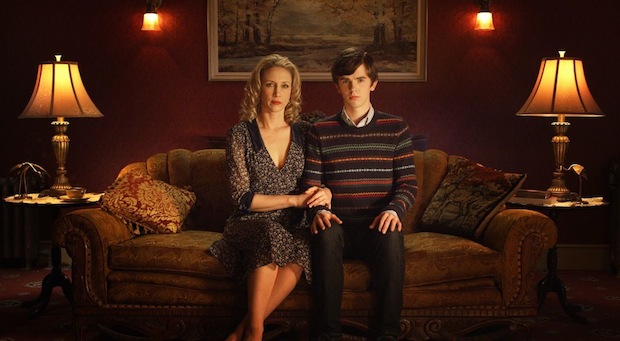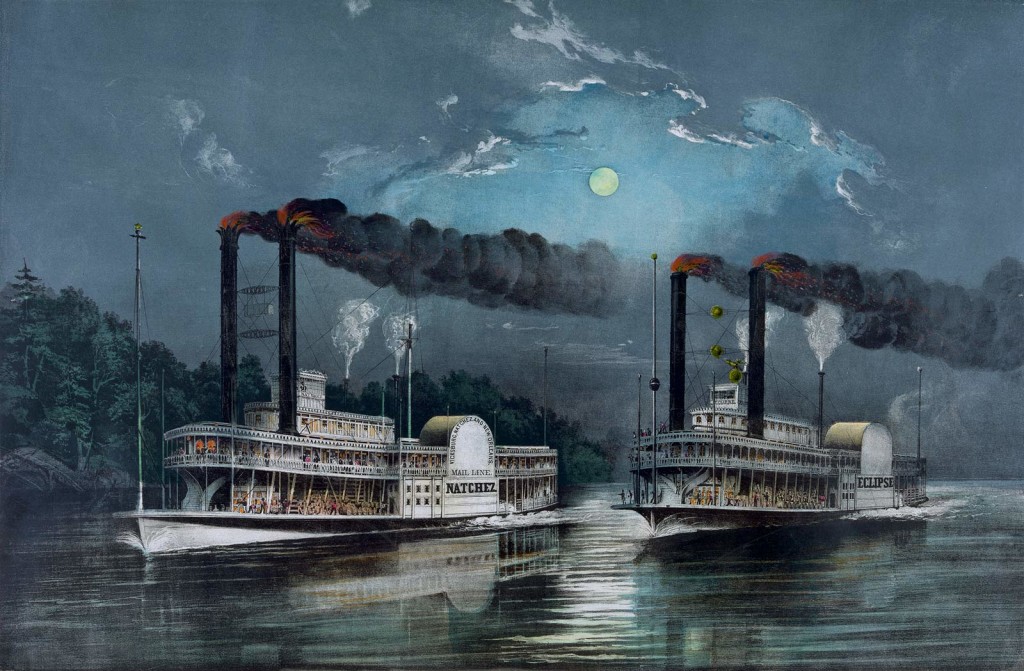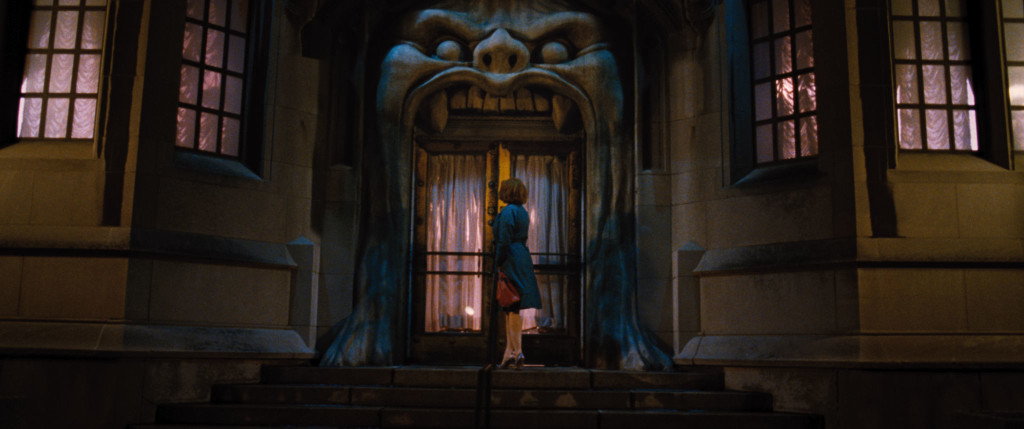IMPORTANT NOTE: THE SCRIPTSHADOW 250 CONTEST DEADLINE IS NOW 3 ½ MONTHS AWAY!
On a lark I decided to catch the Bates Motel TV show recently. I mean how bad could it be? It had Carlton Cuse as the showrunner, who did Lost. And the cast looked strong.
I’ve been pleasantly surprised so far. I mean, you have to come to terms with the fact that the show takes place in the present (Was Norman Bates cloned?) but once you do, it’s entertaining television.
I bring this up because I’ve been watching a lot of television lately – trying to crack the TV code – and I’ve come to the realization that writing for television REALLY HELPS when it comes to writing character.
That’s because you’re forced to know a lot more about your characters in TV than what’s happening in the here and now. You’re thinking three episodes down the road. Six episodes. Even twelve.
As someone who reads a lot of features – features that leave me feeling zero emotional attachment to the characters – this is a revelation. Taking a long-form approach to character forces you to know your characters in a way you never would on the feature front.
Which brings us back to Bates Motel. There’s a moment early on in the second season where Norma Bates’s brother comes to town. And it turns out he and Norma share a dark secret. Normally, this is something a feature writer wouldn’t know, especially if the brother never appeared in the movie. But here, the writers had to know because his entrance into the story needed to be built up.
So as an exercise, I’d like you to approach your feature characters with a TV mindset. Get to know them beyond the 110 minutes that take place in your story. This simple change is going to add a depth and dimension to your characters that you never knew was possible.
To get a little more specific, we’re going to call this the 3-D Method. Those three “Ds” represent the PAST, the PRESENT, and the FUTURE of your character. I guess in a way you can look at me as the ghost of screenwriting. But the budget’s cheap so I’m going to have to play all three parts. Let’s get started.
1-D) PAST
The “PAST” component of character creation is almost exclusively reserved for backstory. It means figuring out as much about your character’s life, up until when your movie begins, as you can. We can actually break this down into two sub-sections. “Relevant to Plot” and “Non-relevant to Plot.” When you’re figuring out backstory that’s non-relevant to your plot, it’s more for you than the audience. A lot of this stuff will never make it into the script, but it will inform your choices about the character. For instance, if your character was raped when she was 15 by a close family friend, she’s probably going to have a problem trusting men. Therefore, you can add a little distance to the character’s personality when she’s around men she doesn’t know. She’s the kind of girl who hangs back and needs to get to know the person before she opens up.
“Relevant to plot” backstory is much different. This is backstory that will directly play into the plot at some point in your movie. So say your main character had an old girlfriend he was never able to get over. Now he’s happily in a new relationship. Near the midpoint of your movie, then, that ex pops back up and has your character second-guessing his current relationship. Obviously, relevant backstory should take precedence. But backstory that isn’t directly related to plot is still mucho importento. The writers who stand out are the ones who add specificity to their writing. And you achieve this by knowing as much about your character’s past as possible. I mean Batman is just a guy in a mask if he never had that experience with the bats. The more you know about your character’s past, the more real they’re going to appear on the page.
2-D) PRESENT
The present is really about your character’s IMMEDIATE MINDSET. What’s going on in that head of his within the two-hour lifetime that is your movie? There are a few things you want to explore here. First, know what your character wants RIGHT NOW, as in IN THIS STORY. They might want a promotion. They might want an engagement ring from their boyfriend. They might want to kill the bad guy. Know what’s driving them. Next, know what mental block is holding them back from achieving that. Maybe they doubt they’re strong enough to make a difference (The Matrix). Maybe they put work/country over family (American Sniper/Interstellar). Maybe they’re afraid of becoming old and boring (Neighbors). Get in your character’s headspace and understand what their issue is RIGHT NOW.
Finally, understand the key issues in your character’s current relationships. Maybe one character believes we need to seize the day while another believes we need to focus on the future (Jack and Rose in Titanic or Ferris and Cameron in Ferris Bueller’s Day Off). Maybe your character struggles with opening up to others (Skeleton Twins). You can’t explore characters in any meaningful way unless you have unresolved issues in those characters’ relationships. There will be some crossover between the past and the present depending on if the characters knew each other before the movie started. So with Skeleton Twins, about a brother and a sister, they’ve known each other their whole lives so this is as much a past issue as it is a present one. With Titanic, the issue is purely in the present since the characters meet for the first time on the boat.
3-D) FUTURE
This is where the TV approach really kicks in. In TV, you need to have a plan for the show’s future. You can’t just make shit up on the fly or the show will fall apart (see “Prison Break” or “Heroes”). For example, you might know that a friend of the main character dies a year down the line. This knowledge allows you to build stuff into the present storyline that will make that future storyline stronger. So you might build a deeper friendship between the two characters so that when the character DOES die, it’ll hit the audience harder. Now, obviously, with features, knowing if a character dies a year down the road isn’t as relevant since it won’t affect the current movie. But there are aspects of the future you do want to think about. For example, where do you see your character five years from now? Are they happy? Successful? Or are they unfocused, self-destructive, no better off than they are today? Probably the most important question you want to ask is, what’s your character’s goal in life? Where do they want end up? Do they want a family? Do they want to still be partying at the nightclubs 7 days a week? Or maybe they want to follow their dream of writing a novel. Answering that question will give you loads of insight into who your character is. You can really get into the psychology of a person by knowing what they want out of life.
Once you know someone’s past, present, and future, you essentially know their entire life. One of the easiest ways for me to spot a newbie is that their knowledge of their characters is limited to the amount of time their story takes place. They don’t know where their characters have been and they definitely don’t know where their characters are going. The 3-D Approach insures that you know every aspect of your character – present, past, and future. And while I can’t promise you that using 3-D will help you create superb characters every time out, I can promise you that it’ll make your characters way better than if you did nothing at all. So let’s write some kick-ass characters this weekend. And feel free to share some character-creating secrets of your own in the comments section. :)
Genre: Sorror (Sort of Horror)
Premise: The illustrious “Fevre Dream” steamboat’s maiden voyage is disturbed by a mysterious passenger who may or may not be a vampire.
About: With Game of Thrones coming back to TV this week, I thought it’d be the perfect time to review a script by… George R.R. Martin??? Yes, believe it or not, Martin wrote a screenplay. It was adapted from one of his own books, Fevre Dream, and written back in the 90s. The script received renewed interest, obviously, when Game of Thrones became big, but apparently missed a window with a big-time director (who Martin wouldn’t reveal) in 2013. Still, Martin is hopeful, and says if the movie ever gets made, this is the draft they’ll use.
Writer: George RR Martin
Details: 129 pages (undated draft, but was written at some point in the 90s).
So when I was researching this script, I came upon a 2013 quote where Martin sounded very hopeful about an A-list director who wanted to make this film. That never came to light. And it reminded me that even when you’re as hot in Hollywood as someone like Martin was in 2013, it’s STILL tough to get a director attachment.
Getting a major director to attach himself to your script is one of the surest ways to get your movie made. BUT. Getting a major director to attach himself to your script is also one of the HARDEST things to do in the business. Actors can make three movies a year. A director will spend three years of his life on a film. Think about that for a second. That means in a, say, 20 year career, a director can only make SEVEN MOVIES. So he has to be very very very choosey. Yet when a director does commit, you’re golden. Your movie is greenlighted and it gets made and your life changes.
So if there’s one question that I think we should try and crack here on Scriptshadow, it’s: How do you get a director to attach himself to your script? What kind of scripts do directors like to direct? Obviously something visual. Something that allows the director to play, possibly try new things that haven’t been done before.
We were just discussing this with Ready Player One in my newsletter. If you’re going to get Spielberg interested in a sci-fi or adventure script, you can’t give him your version of an Indiana Jones type movie. Spielberg’s already done that. If he’s going to commit to that genre, you have to give him something he hasn’t done before. A race in the middle of Times Square with the Back to the Future car and dinosaurs on the course? That’s something he hasn’t done before.
The tricky thing is that every director’s different. Nicolas Winding Refn doesn’t want to make the same movies as Clint Eastwood who doesn’t want to make the same movies as James Wan who doesn’t want to make the same movies as Martin Scorsese.
Muddying the waters more is that some directors are just interested in character. And actors like these directors because they’re more likely to bring them accolades and respect. Damien Chazelle isn’t the kind of guy who’s going to make Jurassic Universe. Yet two of the hottest stars in Hollywood, Ryan Gosling and Emma Stone, just signed on to his latest project because J.K. Simmons won an Oscar in Chazelle’s last film (Whiplash) and if he can win Simmons an Oscar, then maybe he can win them an Oscar. So maybe that means you should write for character to indirectly get to the director.
I don’t know the answer to this question but I do think you should always keep the director in mind when writing a script. Whatever types of movies you like, study the directors who direct those kinds of movies, figure out what things they’re drawn to, and then make sure you include those in your own script, only do it with a new twist or with even more imagination. Again, you can’t just give directors the same thing. They want that “next thing.”
Today’s script, Fevre Dream, is very director-friendly. I haven’t seen this kind of attention to detail since James Cameron’s infatuation with the Titanic. The story follows an uptight steamboat captain named Abner Marsh. The burly Abner lost a fleet of his ships recently in a series of crashes and has put all his remaining money into the Fevre Dream, which he claims is the fastest steamboat in the country.
One of the fun things you learn reading Fevre Dream is that there used to be these unofficial steamboat races down the river, with every captain trying to prove his dick, err, his steamboat, was the biggest, err, fastest. The faster the steamboat, the better the reputation, the more customers, the more money you made.
But Abner has to make a deal with the devil to get this speed. Short on cash, he brings in a partner, the mysterious Joshua York, a fair-skinned Englishman who has only one rule. He needs to conduct business in every town they visit.
Seems like a small favor to ask, but Abner soon finds York disappearing into these towns for 2-3 days, holding up his boat, starting the Fevre Dream off with a bad reputation. Not only that, but he always brings mysterious characters back with him. These individuals, like York, are never seen during the day. And their social skills are so serial-killer-like, they begin scaring the other crewman.
It doesn’t take a White Walker scientist to tell that these folks are vampires. But what are they doing on the boat? What is it they want? That becomes clear when York finally confronts another vampire, a gentleman named Damon Julian who’s lived for THOUSANDS of years to York’s hundreds. These two will eventually square off. And the Fevre Dream, unfortunately, will be caught in the crossfire.
I’d like to begin by saying: THIS IS HOW YOU START A SCREENPLAY.
If you can’t grab your reader right away, why would the reader believe you could grab them for an entire story? And a great way to grab a reader is to make them feel EMOTION.
Fevre Dream starts with a black teenage girl being auctioned as a slave. Men bid on her heartlessly, as if she were an object. And when the money gets higher, so do the demands. The men want to see “what she’s working with.” And so the girl is required to disrobe and stand completely naked in front of these men.
It’s a scene so unsettling that you can’t help but be affected by it. So affected are you, in fact, that you don’t realize Martin’s roped you in.
But what really sets Fevre Dream apart is its attention to detail. I recently read a script about a game designer. My big complaint to the writer was that at the end of the script, I didn’t know any more about what a game designer did than what I knew at the beginning of the script. That’s a big fail. Whatever your subject matter is, you better make sure the reader leaves the story knowing more about it.
And here, the way Martin lovingly describes the design of the steamboat, how it runs, how it’s managed – it made you feel like you were back in 1850, like you really knew what riding on these steamboats was like. That’s what great scripts do. They bring you into their reality.
Where the scripts starts to get shaky is in its depiction of vampires. So much time is spent explaining to us what these vampires weren’t (they’re not affected by holy water. They don’t need to sleep in coffins. They don’t leave a pair of bite marks on your neck), that I was never sure what they were. I didn’t know the rules. They drank blood. They could walk around in light sometimes. Other than that, they felt ill-defined. And that’s when I realized why Fevre Dream wasn’t the kind of hit Game of Thrones was.
I don’t think Martin knew what he was writing here. Is this a steamboat movie with vampires or is it a vampire movie that takes place on steamboats? It feels to me like Martin was fascinated with steamboats but knew writing a story JUST ABOUT THEM would be lame. So he decided to add vampires.
The results are uneven, but that doesn’t mean the script doesn’t work. Martin has such a love for everything he writes that that love washes over you. He makes you a believer.
Martin’s also really good at shocking you. There’s a scene in this script that is one of the most shocking I’ve ever read. It’s so disturbing that most of you wouldn’t be able to handle it so I’d suggest you never look into it.
But in a strange way, I admired the scene. So many writers know where the “Hollywood Line” is. And by “Hollywood Line,” I mean that line that Hollywood doesn’t want you to cross less the audience gets offended. It affects everything we see because we know that in the end, it will always be okay.
But when you decide to cross that line? When you ignore it? You force the reader to revaluate everything they think they know and now they have no freaking idea what’s going to happen next. That’s territory rarely explored in screenwriting. So it’s refreshing when I see it.
Fevre Dream is a strange tale. I’ve seen some odd mash-ups before (Hansel and Gretel as gun-slinging killers?) but steamboat porn and vampires is a first. If you’re weird and have a high tolerance for one extremely violent scene, this script is out there. Grab it and take a read.
[ ] what the hell did I just read?
[ ] wasn’t for me
[x] worth the read
[ ] impressive
[ ] genius
What I learned: Sounds. A lot of screenwriters are so focused on the VISUAL side of their screenplay that they forget about the audible side. Sounds add dimension to the read. And the more dimensions you add, the more you can trick the reader into believing in your world. Key in on any important sound and describe it as well as you can. For example, when Damian (one of the vampires) is first introduced, Martin reserves a line just for his voice: “His voice is dark and sensuous, rich as a fine cognac.” A tiny line but I could hear Damian’s voice after that. It broke down one more brick between reality and fiction.
Genre: TV Pilot – Drama/Procedural
Premise: A veteran cop teams up with an unconventional young partner to take down Charles Manson in the days before Manson’s infamous killings.
About: Aquarius has been steadily gaining buzz ahead of its premiere next month. The gritty team-up of two cops in search of Charles Manson seems to have been at least, in part, inspired by True Detective. If not in this draft (which is dated 2013), then in its subsequent rush to get to the small screen. Writer John McNamara is a bit of a journeyman, writing for 15 different TV shows dating back to 1983. He’s arguably experiencing the biggest moment of his career, not only writing this, but also the feature, “Trumbo,” starring Bryan Cranston, which chronicles the life of screenwriter Dalton Trumbo, who was one of the screenwriters blacklisted during the red scare. Trumbo will be his first feature credit. Oh, and the series will star X-Files alum, David Duchovny (playing the lead cop, not Manson, although I’d be way more interested in this if he played Manson. Now that would be funny).
Writer: John McNamara
Details: 55 pages (Revised Draft – October 28, 2013)
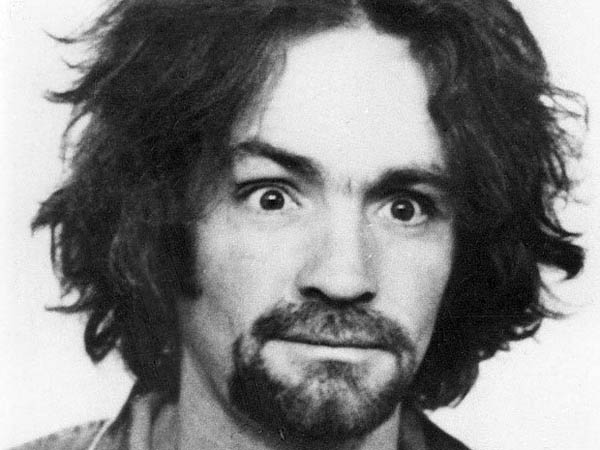 “What are you talking about? I’m not crazy, man!”
“What are you talking about? I’m not crazy, man!”
I’m going to try and say this politely. This was one of the most visually unpleasant scripts I’ve read in awhile. When you look at a good page of writing, it’s like walking into a clean apartment. Everything is where it’s supposed to be. The person living there cares about the placement of the chairs, the tables, the television, everything. You feel comfortable and safe.
Walking into Aquarius felt like walking into your derelict drug-dealing friend’s basement. There’s a 3 foot tall stack of dishes in the sink. A trail of ants on the wall. Garbage bags lean against objects, their shape molded into them because they’ve been there so long.
Simple things like paragraphs. You want to have uniformity to your paragraphs. 2 lines here. 3 lines there. Aquarius would rock us with a 6 liner, then hit us with a 1 liner, then a 2, then another 6. It was an assault. It was all so jagged and crude.
We also had WAY too many characters, even for a TV show. I’m fine with lots of characters if they have a place in the show. But there were like 80 cops introduced, 70 of which surely won’t be around for episode 2. And it took me until page 30 before I knew who our protagonists were.
There were also little things that made reading unnecessarily difficult. Tons of needlessly CAPITALIZED WORDS. Underlined words. Three line parentheticals!!! And that was standard. It was like this was written during a 3 day Vegas bender.
After weeding through all that mess, I was able to discover somewhat of a story. Aquarius follows LAPD Sargent Sam Hodiak. Hodiak’s called in by Grace Karn, a woman he used to date, whose 16 year old daughter, Ella, is missing. Because Ella’s father has political aspirations, they can’t make this public. So they were wondering if Hodiak could, you know, find Ella on the down-low.
Since Ella was last seen partying, Hodiak calls on Brian Shafe, a young cop who’s recently infiltrated the hippy drug scene. Shafe becomes an undercover secret weapon who works his way into the parties where he finds out a certain somebody is hoarding up all the hot girls, promising them a life of love and happiness. That somebody is a young drifter named Charles Manson.
While Manson’s interest in Ella appears random at first, it turns out there’s more than meets the eye. Ella’s lawyer father used to represent Manson. And when he stopped returning Manson’s calls, Manson took it personally. Therefore, his seduction and defloweration of Ella was payback. He lets her father know that if he doesn’t start cooperating, this is just the beginning.
 Abercrombie & Fitch ad or a scene from Aquarius? You decide!
Abercrombie & Fitch ad or a scene from Aquarius? You decide!
Aquarius feels like Ryan Gosling may have consulted on it. It takes forever to get started, with a never-ending line of character introductions before any real story begins. I mean if you don’t know who the main character in a pilot is before page 30, the captain needs to be notified that the plane is going down.
This meant the last 26 pages contained all the good stuff. And there are a couple of nice scenes. Like when Shafe takes a fresh-out-of-training undercover female cop to convince Manson’s right-hand man to take them to Manson. The henchman tells them sure, but the price of admission is that he gets to bang the girl. Shafe did not prepare the female cop for this and they can’t blow their cover so he goes along with it, leading to the only scene in the pilot that contained some actual suspense.
My biggest issue with Aquarius is that if you take out the Manson element, there’s nothing left. I understand that the dramatic irony of Manson’s involvement drives the story. But that doesn’t mean you can just phone everything else in. Without Manson, these are just a couple of cops looking for a guy who kind-of kidnapped a girl (but not really, since she wanted to go with him). Not exactly a high-stakes scenario. It’s hinted at that Manson killed a girl a few months earlier. Why not start there? Now you’ve got a show.
I’m also worried about the show’s arc. We all know where it’s headed. And it’s not good. The good guys lose. So why are we watching again? Resting on the celebrity of Manson isn’t enough. Then again, maybe this is another True Detective scenario where I just don’t get it. That’d be nice. I don’t want the show to be bad. But going off this pilot script alone, it doesn’t look good.
[ ] what the hell did I just read?
[x] wasn’t for me
[ ] worth the read
[ ] impressive
[ ] genius
What I learned: It’s hard to make the reader care when he’s way ahead of the investigation. We all know that Manson took Ella. We saw it. The next 40 pages, then, are waiting for Hodiak and Shafe to catch up to us. You can add suspense to this scenario IF the victim is in imminent danger (Silence of the Lambs). But Ella never seems to be in danger at all. She’s a little unsure of being here. But that’s it. Not exactly a ticking time bomb scenario.
Genre: Drama
Premise: A single mother and her family struggle to make ends meet in a dying town that finds itself descending into madness.
About: Lost River is the writing-directing debut of actor Ryan Gosling. Gosling put together a stellar cast that included Christina Hendricks, Saoirse Ronan, and Eva Mendes. The script played a couple festivals but the consensus seemed to be that while ambitious, the movie is a miss. It came out this weekend and currently has a Rotten Tomatoes score of 31%. The script (formerly titled, “How to Catch a Monster”) first came to my attention when it finished extremely high on The Hit List, a list of the best specs of the year. However, it was conspicuously absent from The Black List, which was released a few days later. Was the script great? Was it terrible? Who knew? Well, it was time I knew. And hence, today’s review!
Writer: Ryan Gosling
Details: 101 pages (April 19, 2012 draft)
Most people would argue that Ryan Gosling has it all. He’s handsome. He’s a movie star. He’s one of the few big actors in Hollywood who hasn’t sold out. Oh, let’s not forget he’s married to one of the most beautiful women in show business. So when the man decides, “Hey, I’m going to write and direct a movie cause why the hell not,” the response was probably akin to the way the DJ world embraced Paris Hilton when she decided to become a DJ.
And they have a point. I mean let’s pretend we’re there to watch Ryan casting his film. What if a screenwriter showed up and said, “I’d like to play a major role in your movie.” We’ll even give this writer the benefit of the doubt. Let’s say he has the perfect look for the part. So Ryan responds, “Well, have you ever acted before?” “No,” he says, “But I watch a lot of movies. And I write a lot of scripts, so I understand character.”
Do you think Ryan would cast him? I’m guessing not. My gut tells me he’s going with a much more experienced actor. Why? Because he knows how hard acting is. Because, after putting all that time and effort into becoming the great actor that he is, he knows how intense one must train as an actor to become great at it.
So then why does he think screenwriting would be any different? I would argue that becoming a good screenwriter is much harder than becoming a good actor. 99.99999999999999% of the people on the planet can’t keep a reader’s attention for more than 2 minutes on the page.
That’s not to say you can’t have crossovers. Matt Damon writes. Ben Affleck writes. Chris Rock writes. Actually, Chris Rock’s debatable. But in any case, these are guys who have always been writing, who came into the business as double-threats. I confess I don’t know the specifics of Ryan’s background, but it seems like he just decided to write a script one day. And whenever you’re someone successful who enters another space, people are waiting to jump on you. Especially people on the internet, which might as well be called Haterverse.
I’m going to try and not be one of those people. I want to read this screenplay objectively. I just have a lot of respect for how difficult it is to write a good script. Therefore it’s hard for me to see people who haven’t gone through the trials and tribulations of struggling through this craft without a skeptical eye.
Billy, on the cusp of the big four-o, knows her stripper days are numbered. And it couldn’t come at a worse time. She’s days away from losing her home and doesn’t have many skill sets to change that fate. Any that don’t include polls that is.
Her only shot is a loan and, ironically, the bank manager she needs to convince happens to be the guy she made fun of back in high school when she was the mean hot chick. But Bank Manager Guy doesn’t hold grudges, and offers her a job at his new unique facility, a sort of live theater house with some weird shit that goes on in the basement.
Billy takes the job because… what else is she gonna do? In the meantime, her teenage son, Bones, is running around trying to avoid the town bully, whose name is literally “Bully.” Bones finds spiritual solace in learning that a former town from the 1950s is buried under the nearby river and starts spending his time diving underneath the river and exploring it.
We’ve also got Rat, Bones’s teenage crush who lives with her formerly famous actress grandmother who now watches her old silent movies on repeat all day. If you stop them she begins a high-pitched scream that doesn’t end until you start them again. And we’ve also got Frankie, Billy’s 4 year old son who’s… SUICIDAL! Yes, Frankie dreams of getting run over by a car so whenever he’s near a street he runs into it, hoping to get hit.
That, in a nutshell, is Lost River.
Gosling maybe should’ve titled this “I’m Lost River,” cause that’s how I felt half the time. The thing is, the script isn’t that bad. It’s just that Gosling makes a classic amateur blunder, one that pretty much every beginner screenwriter makes for their first few screenplays. That’s that he builds the story way too slowly. Everything takes forever to happen. If he would’ve just sped it all up, this might have been a good movie.
Case in point. The script’s most compelling element was this old underwater city. Ask me what page this city first gets mentioned. Page 10? No. Page 20? Nuh-uh. By page 30 at least. No. 40? Nosir. It isn’t mentioned until page 50!
Wha???????
You’ve even titled the script after this underwater town. Why isn’t it mentioned until the film is halfway over???
In addition to this, we have the Wolf Playhouse and its sketchy basement activities. This part of the script also had some cool ideas in it. Billy’s job is to get inside this clear bullet-proof shatter proof super-reinforced coffin of sorts. Men then come into the room and take their rage out on you. They can do whatever they want, except touch you, obviously, since you’re protected by this super-coffin.
But that storyline doesn’t truly get started until around page 75. With just 25 pages to go in the script!!! Naturally, the rest of that storyline feels rushed. This is a classic structural problem and something that if you don’t write a lot of screenplays, you’ll likely screw up.
I was recently explaining to a writer that anybody can ramble a story together over 150 pages. Just by the mere fact that you’re continuing to type, you’re going to carve together a story at some point. What the pros do differently is they make sure every scene has a strong reason for being there. This ensures that the story is tight and focused.
One of the easiest ways for me to tell if a writer knows what he’s doing is to read the first few pages of his script. A good writer makes you feel like you’re going somewhere right away, like there’s a meticulous design being laid out. Inexperienced writers just sort of write scenes until they come up with an idea for a good scene. They then, inexplicably, keep the previous four or five pointless scenes, believing those scenes justify themselves by the mere fact that they inspired the relevant scene. That’s not how screenwriting works. You have to jump into your story right away and never waste space.
The rest of Lost River is a mixed bag of floating debris. Gosling is trying to create something deeper and more thoughtful here, but it’s not entirely clear what that is. He gives his characters names like Bones, Bully, and, Rat. He’s got the big bad wolf play theatre. Rat lives in a “nest” inside her hoarder grandma’s house. The Lochness monster even makes a cameo. So I guess it’s like this fairy tale but because the script takes so long to find itself, none of those symbolic references register in any meaningful way. In fact, they often feel on-the-nose and silly.
And then you just have weird choices like a suicidal 4 year-old obsessed with getting hit by a car. When Frankie escapes from school to run out in the street and get hit, Billy confronts his teacher with this line. “You fucking bitch.” The teacher’s response: “I have never, in my entire career, dealt with a child who was hellbent on getting hit by a car. It’s all he wants to do. You ever ask yourself why your son has a death wish at four years old?” Not gonna lie. Almost put down the script after that one. And are 4 year-olds even capable of suicidal thoughts? This didn’t make any sense to me.
I wish Gosling would’ve let a professional screenwriter write this for him. There are some genuinely cool ideas in here. But ideas without focus are just ramblings. And that’s a bit what Lost River felt like.
[ ] what the hell did I just read?
[x] wasn’t for me
[ ] worth the read
[ ] impressive
[ ] genius
What I learned: Whatever pace you’re setting up your story at, chances are it’s slower than it needs to be, especially if you’re new to screenwriting. This is why you hear all these rules like “combine scenes” and “only write scenes if they’re absolutely necessary.” It’s all to move the story along faster so that you keep your reader interested.
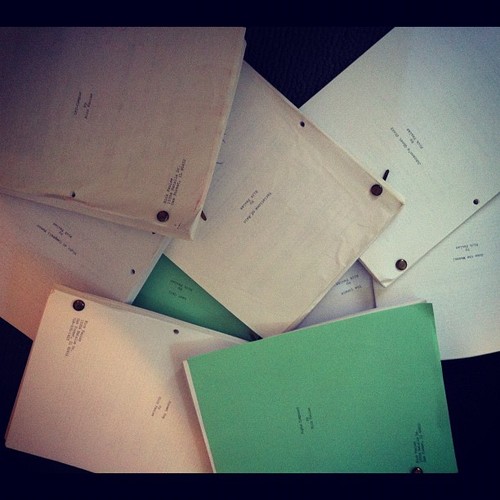
After yesterday’s spectacular surprise, the buzz is high for this week’s Amateur Offerings. If you’re too shy to display your script to the world, maybe doing the Scriptshadow 250 dance is a better option. You know how it works. Read til you’re bored. Share your thoughts in the comments!
Title: Guilt
Genre: Dark Comedy (99 pgs)
Logline: A crack-smoking lawyer, witness to a murder, tries to redeem himself by vindicating the teen prostitute wrongly accused of the crime.
Why you should read: Though I’d love to come up with some touching, true-life moment that makes this story personal, I cannot. I simply wasn’t born into the same dire circumstances as those typically faced with the horrors of an unjust justice system. I’m also not a self-absorbed coke fiend like my protagonist. But while this story isn’t a reflection of my life, I know it is for many others, and I hope I was able to capture at least some of that strife, in addition to bringing some moments of ironic hilarity.
I’ve been a long time reader of Scriptshadow, mainly because no matter what the article or review, you seem to provide something fresh every time. You could throw a rock in any direction and hit five blogs on “how to write a screenplay”, or “the 10 mistakes young writers make”, but every one of them seems to just regurgitate the same points. It’s like no one has an original perspective on the business, except you and maybe a handful of others. And to your perspective, I made this script as lean as possible, while creating a fun character that any A-list actor should be dying to play.
My initial goal in writing Guilt was to meld the tragic angst of the Verdict, with the drug-fueled narcissism of The Wolf of Wall Street, along with a healthy GSU, because this young girl doesn’t have long before she’s put away for life.
Here’s what one Blacklist reader had to say: “What makes this script so interesting is how intelligently it tackles the unjust practice of forcing innocents into accepting plea deals. It’s rare to see a comedy that can highlight such a serious social ill while still keeping the laugh factor high, but thankfully, this script does just that. Reginald is a well-developed anti-hero; his heart is usually in the right place, but his actions don’t’ always reflect his good intentions. Though not perfect (see below), his relationship with his daughter Becca is what ultimately grounds Reginald as it gives him the greatest high of all time, one he could never receive from a drug. The dialogue, in particular Reginald’s monologues, is also extremely funny and well-written.”
I hope you find it a fun read!
Who doesn’t believe in second chances!?
Title: The Creation of Adam
Genre: Thriller/Horror
Logline: When Adam, a troubled teenager, learns from his father that they both carry an evil that is passed from father to son, Adam must decide to fight the demon…or become one.
Why you should read: Last year, when my script was featured on AOW, I got a very enthusiastic email from an actor-director who wanted to make the film with his friend, a famous actress, and a couple of other talents from CAA. My screenwriter’s dream was crushed when the actress decided that it wasn’t for her.The director probably went to look for another project to do with her and I was back to writing something new.
Here it is, a thriller/horror script, Shining meets The Omen, a movie I feel so passionate about, I’m willing to cheat the lottery, direct-produce-edit it myself if I need to. So, why should you read it? Because this script has mystery, thrills, horror, very cinematic set pieces you’ve never seen before and a weird father-son relationship gone horribly bad. A reader wrote “This script takes coming of age to a whole new level” Hope you agree.
Title: Drawing Dead
Genre: Crime
Logline: An opportunistic and ambitious sniper-turned-hitman gets the opportunity of a lifetime to fulfil his ambitions when he gets the job of killing the woman he’s falling in love with.
Why you should read: I work in an advertising agency, where I’m a strategist. My best work to date by far has been the strategies I’ve developed for how to appear hard at work in an open-plan office where my screen is on public display. And so, in emails to myself, word documents and in the notes section of powerpoint slides, this script slowly came together. When people were getting too close I’d switch to my native Norwegian, just in case.
Anyways, the script is a blend of three crime sub-genres (all with a twist): the hitman movie (Gen-Y has entered the workforce), the film-noir (the femme fatale and private detective join forces) and the Mafia film (a dysfunctional crime family replaces scare tactics with modern marketing principles).
I can but hope that the whole proves greater than the sum of its parts and that the result is a fresh and interesting read. I hope you enjoy it and I very much look forward to your feedback!
Title: Cielo Drive
Genre: Action
Logline: Taken set against the Manson Family murders. Sharon Tate’s father, an Army Intelligence vet, takes matters into his own hands when he infiltrates the L.A. underground scene in order to find her killer. — Tate’s father do go undercover but it’s never been revealed what he actually found. He was close enough to finding something that the LAPD were nervous about his presence.
Why you should read: My name is Erik Stiller, and I’ve just been promoted to Staff Writer for the upcoming season of CBS’ CRIMINAL MINDS. If you like LA history and revenge-action with a good man doing brutal shit then check out this feature.
Title: THE FUSE IS BURNING…
Genre: Mystery/Thriller
Logline : A troubled man tries to find solace by searching a desert canyon for dinosaur fossils. But everything changes when a young girl is found murdered in the same remote region.
Why you should read: There’s nothing like a good story. And this one begins one hundred sixty five million years ago.

